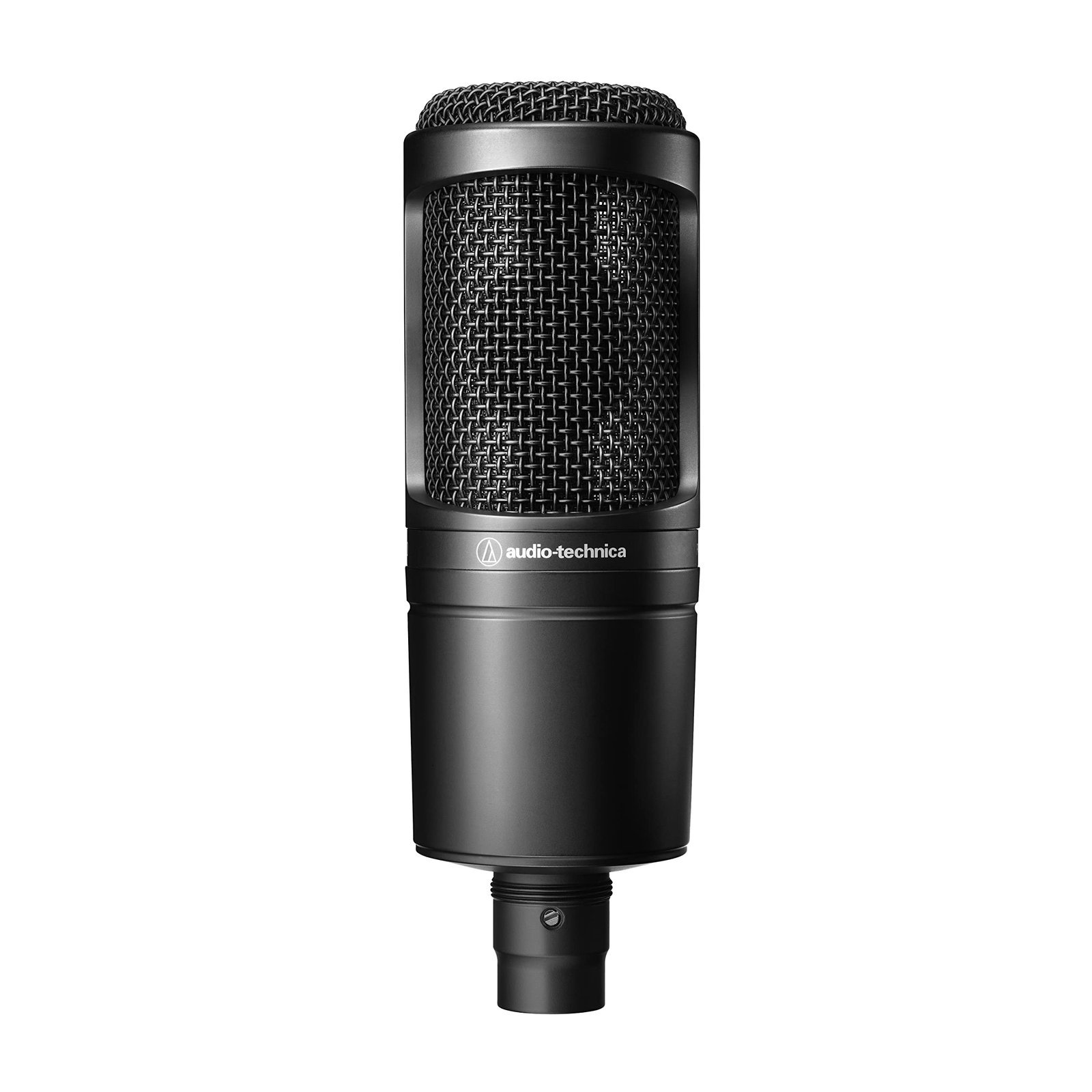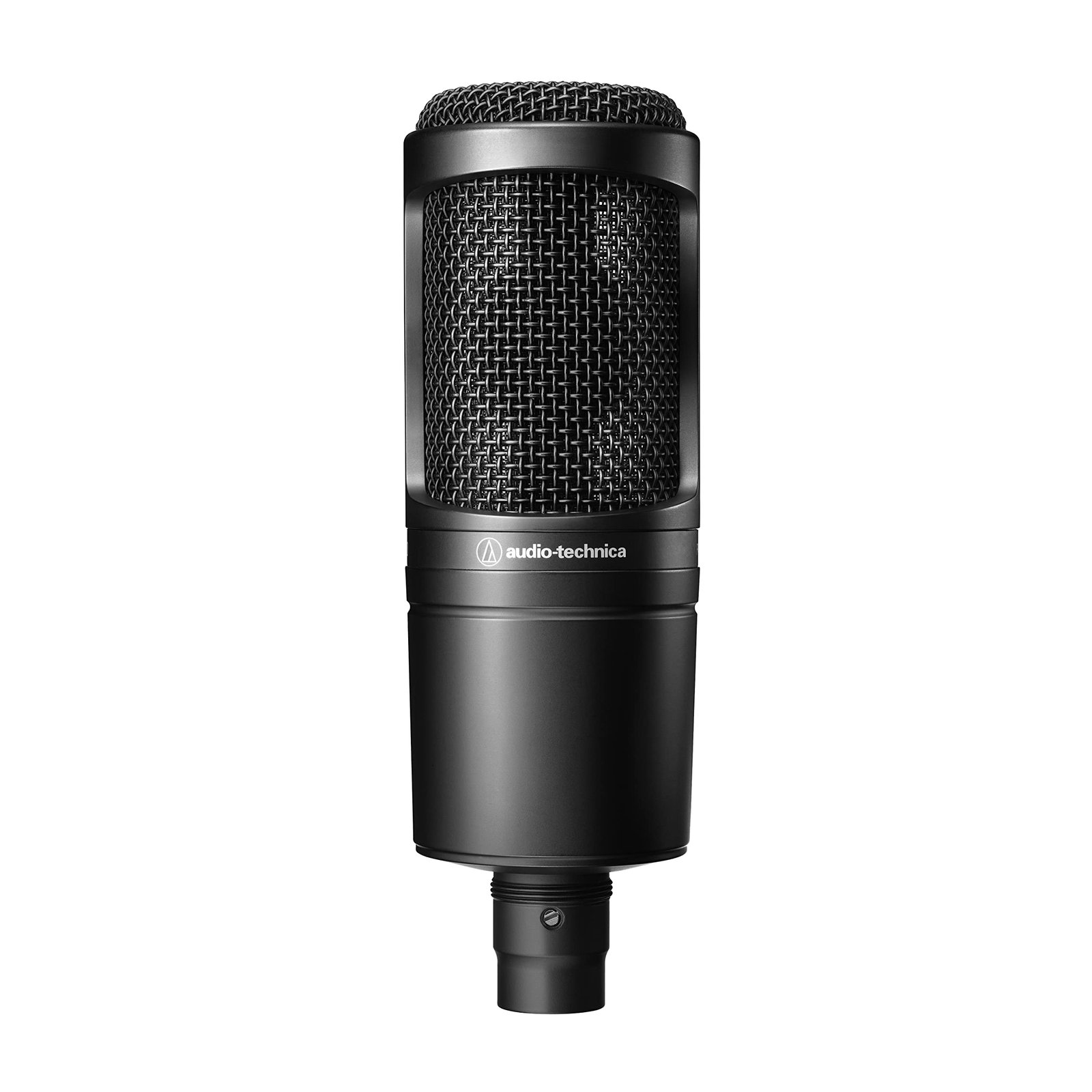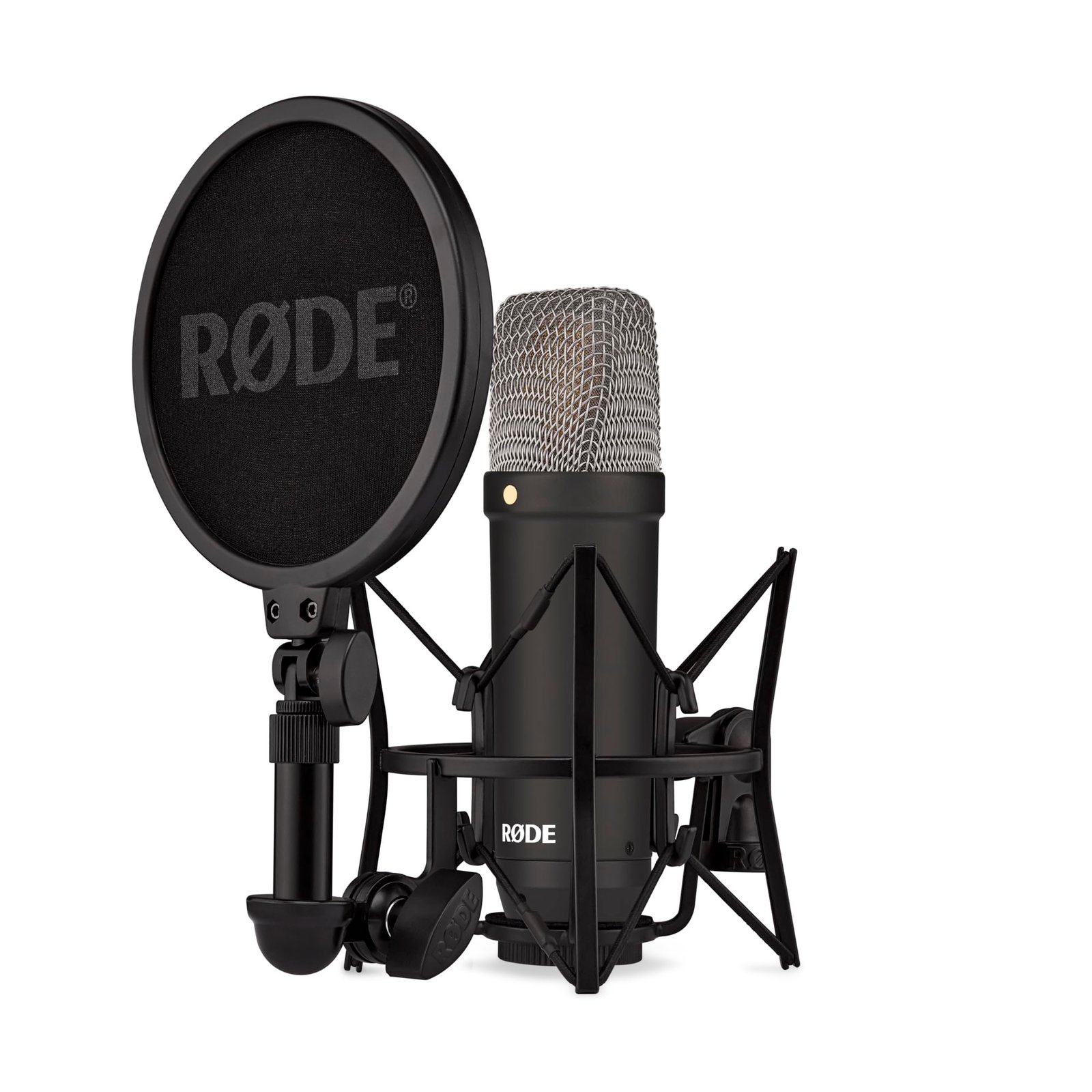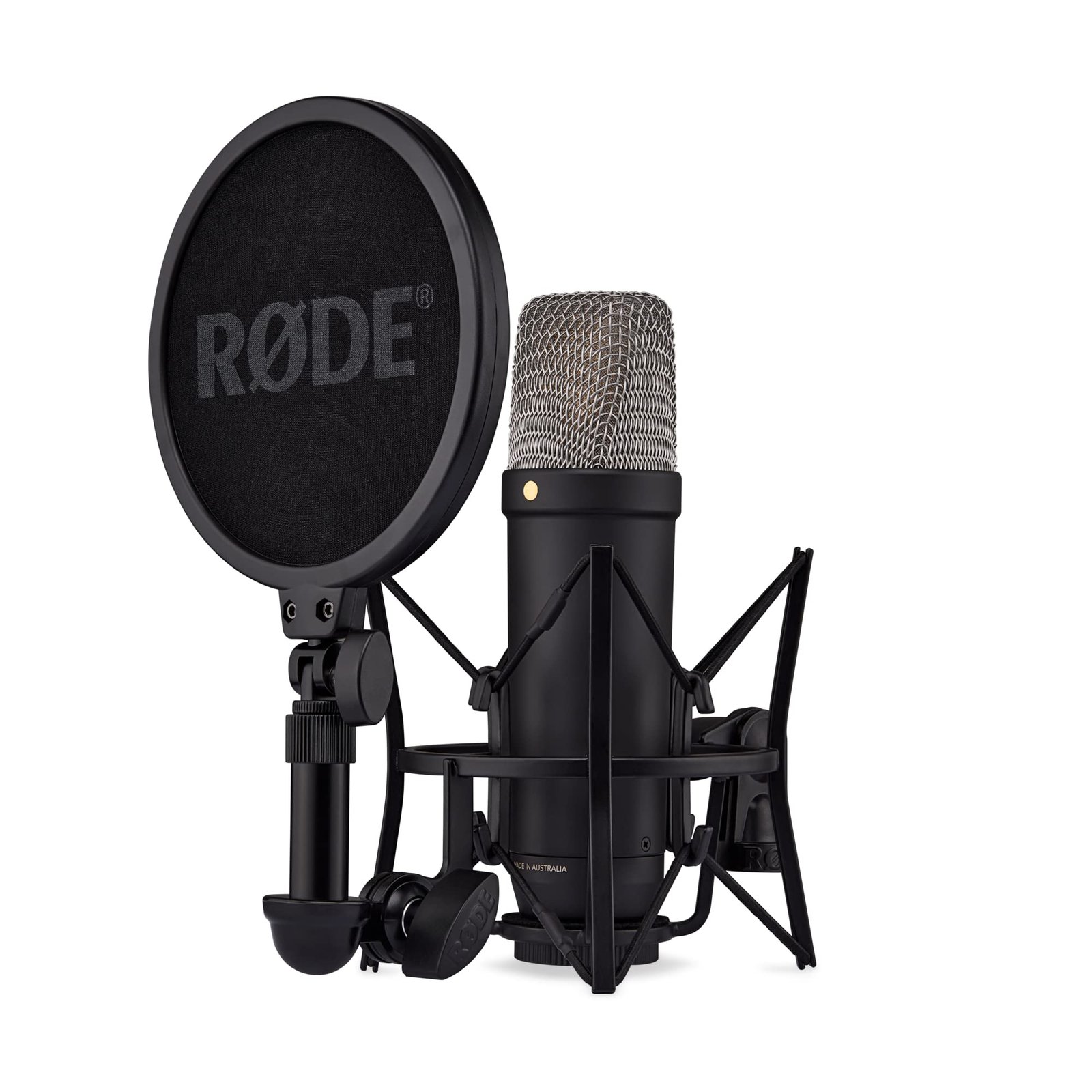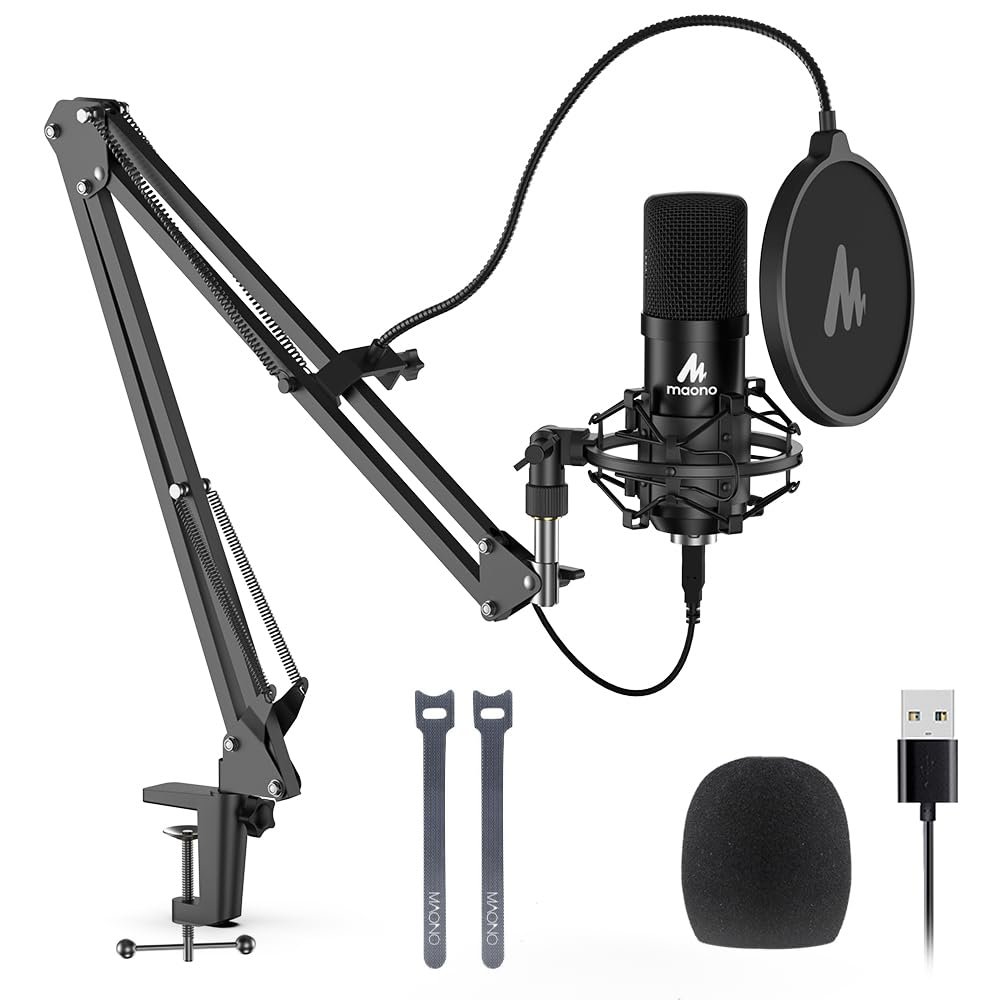Microphones are essential tools in various settings, from recording studios to live music performances, helping to capture sound with clarity and precision.
Among the many types available, condenser microphones are particularly popular for their ability to provide detailed audio quality.
In comparison with dynamic microphones, condenser microphones are known for their sensitivity and clarity, making them ideal for studio work where capturing fine details is crucial.
Sonic Accuracy
One of the main reasons you might choose a condenser microphone is its sonic accuracy.
Condenser microphones excel in recording vocals and acoustic instruments, thanks to their ability to capture a wide range of frequencies and subtle nuances.
When selecting a condenser microphone, key factors include the diaphragm size, power requirements, and polar patterns.
These factors will influence the microphone’s performance and suitability for different recording situations.
Power Requirements
Powering condenser microphones usually requires an external source, often provided through phantom power.
So, ensuring compatibility with your audio interface or mixer is essential.
Consider how you plan to use the microphone and in what settings—this will guide you to a model that best matches your needs.
Exploring your options thoroughly will lead you to a condenser microphone that enhances your audio projects and aligns with your creative goals.
Best Condenser Microphones
When you’re ready to upgrade your audio setup, a condenser microphone is often the best way to go.
These mics capture rich sound details and are perfect for studio recordings or podcasting.
Let’s dive into the top picks to help you find the perfect match for your needs.
Audio-Technica AT2020 Mic
The Audio-Technica AT2020 is a fantastic choice for your home studio, delivering great audio quality without breaking the bank.
- Excellent audio quality for its price
- Handles high sound pressure levels effectively
- Durable and reliable build
- Does not include an XLR cable
- Requires additional equipment to use
- Not suitable for USB plug-and-play setups
The Audio-Technica AT2020 stands out with its superior sound quality, especially given its price point.
This microphone is engineered to handle high sound pressure levels, which makes it versatile for various recording applications, from vocals to live instruments.
You’ll find it satisfying to work with due to its robust construction.
While it’s built to last, the microphone doesn’t compromise on performance.
Its cardioid polar pattern efficiently isolates the sound source, which comes in handy when you need to minimize background noise in your recordings.
Keep in mind that it doesn’t come with all accessories, such as an XLR cable, and needs additional audio equipment to function, like an audio interface.
For users who require a simple USB setup, this might be a consideration.
Nonetheless, if you’re setting up a home studio and looking for a reliable condenser mic, the AT2020 is hard to beat for the price.
RØDE NT1 Signature Series Mic
For a versatile and high-quality condenser microphone with unmatched sound clarity, this is one you should consider.
- Warm and smooth audio character
- Comes with a shock mount and pop filter
- Extremely low noise level
- Lacks USB connection
- May require additional audio equipment
- Slightly higher price point
Whether you’re diving into podcasting or fine-tuning your home studio setup, the RØDE NT1 Signature Series offers excellent sound with its renowned condenser capsule.
It’s a great match for those who prioritize audio quality.
You won’t have to worry about unwanted noise thanks to its exceptionally low noise handling.
This makes it ideal not just for recording vocals but also for capturing detailed instrumental sound.
While it lacks the convenience of a USB connection, this might be a trade-off for those seeking superior audio conversion through XLR inputs.
The included shock mount and pop filter make it a ready-to-use package for anyone serious about quality recordings.
512 Audio Skylight Microphone
This mic offers rich and warm sound quality, a solid choice if you’re into podcasting or vocal recording.
- Captures detailed, warm sound
- Sturdy build and attractive design
- Reduces ambient noise with cardioid pattern
- Requires some setup knowledge
- Might be bulky for travel
- Pricey compared to entry-level options
The 512 Audio Skylight is designed to bring out the nuances in your vocal recordings.
With its gold-plated condenser capsule, your recordings sound rich and full of character.
Its cardioid polar pattern focuses on sounds from the front, minimizing background noise in less-than-perfect environments.
This microphone doesn’t just focus on function; it sports an appealing vintage-inspired design.
While it feels robust, the build is premium and matches its audio quality.
A sleek metal mesh pop filter and shockmount help to reduce plosive sounds and vibrations, ensuring clear recordings.
Overall, if you’re looking for a professional-quality microphone, this one’s reliability and pleasing sound make it a worthy investment.
Just be ready to connect it via an XLR setup, and it could become the centerpiece of your recording gear.
RØDE NT1 5th Gen Microphone
This mic is an excellent choice if you’re looking for studio-quality sound with modern versatility.
- Ultra-low self-noise ensures clear audio capture.
- Dual connectivity options with USB and XLR.
- High-resolution digital output for professional recordings.
- Design features may not be minimalistic for some tastes.
- Requires specific software for 32-bit audio recording.
- The included holder could be less bulky.
Embrace the evolution of a studio classic with the RØDE NT1 5th Gen Microphone.
This mic pairs traditional warmth with next-generation tech, offering you both USB and XLR connectivity.
Whether you’re recording vocals or instruments, the NT1 effortlessly suits a variety of recording environments.
Performance-wise, it features RØDE’s Revolution Preamp for high-gain and low-noise results.
This ensures your recordings are nothing short of professional.
Plus, its robust build, sporting military-grade ceramic coating, makes it a durable choice for everyday use.
If recording quality and versatility rank high on your priority list, then this might just be your ideal pick.
The NT1 delivers unparalleled sound quality while providing the flexibility to connect directly to your laptop or a mixing console.
MAONO USB Microphone Kit
This microphone kit is a solid choice if you’re diving into podcasting or recording without breaking the bank.
- High-resolution sound quality enhances your recordings.
- Easy to use with a plug-and-play USB connection.
- Comes with a complete kit including a boom arm and pop filter.
- The included arm clamp may feel a bit flimsy.
- Lacks a dedicated mute button.
- Requires a separate OTG adapter for mobile devices
Starting a podcast, recording music, or creating content for YouTube can be a daunting task, but the MAONO USB Microphone Kit makes it straightforward and affordable.
With its professional-grade sound chipset, you’ll notice a significant improvement in audio clarity and warmth, which is crucial for engaging content.
This microphone is user-friendly, perfect for beginners and experienced creators alike.
Its plug-and-play feature means you can get up and running in no time without dealing with driver installations.
Compatible across most operating systems, it’s a versatile option for diverse recording needs.
The kit includes a shock mount and a boom arm, which help negate overtones and vibrations for smoother audio capture.
While it’s a comprehensive setup, the clamp securing the boom arm might not inspire full confidence in sturdiness, so handling with care is advised.
Buying Guide
When looking for a condenser microphone, consider your budget first.
Prices vary widely, so decide how much you’re willing to spend before diving into options.
Keep in mind what you’ll use the mic for—recording vocals, instruments, or podcasts—since this affects your choice.
Key Features to Consider:
-
Polar Patterns: Check if the microphone has a cardioid, omnidirectional, or bidirectional pattern. This determines how it picks up sound. A cardioid pattern is usually ideal for solo recording.
-
Frequency Response: Look for a mic with a suitable frequency range for your needs. A wider range may better capture the nuances of sound, from deep bass to high treble.
-
Connectivity: Some mics connect via USB, while others use XLR connections. Think about what works best with your current setup. USB is simple and plug-and-play, while XLR might offer better sound quality.
-
Sensitivity and SPL (Sound Pressure Level): Choose a mic with the right sensitivity for your recording environment. Higher sensitivity picks up softer sounds, but can also catch unwanted noise. High SPL support is great for louder sound sources.
Comparison Table
| Feature | Description |
|---|---|
| Polar Patterns | Cardioid, omnidirectional, bidirectional |
| Frequency Response | Wider range for capturing sound nuances |
| Connectivity | USB for simplicity, XLR for sound quality |
| Sensitivity | Higher sensitivity for softer sound capture |
| SPL | High SPL for loud sound sources |
Frequently Asked Questions
Condenser microphones are a popular choice in the audio recording world for their sensitivity and sound quality.
They have unique characteristics, making them ideal for certain situations and applications.
What’s considered the best type of condenser mic for recording vocals?
Large diaphragm condenser microphones are often preferred for recording vocals due to their ability to capture rich details and warmth.
Many artists and producers swear by models like the Neumann U87 for its renowned sound quality.
Under what scenarios do condenser mics typically shine?
Condenser mics are excellent in studio environments where capturing detailed and nuanced audio is crucial.
They work well for vocals, acoustic instruments, and any scenario requiring a wide frequency response and sensitivity.
Can you explain the main differences between condenser and dynamic mics?
Condenser mics use a capacitor to capture sound, making them more sensitive and accurate in picking up high-frequency details.
Dynamic mics, in contrast, are robust and better suited for loud sound sources like live performances.
What’s a drawback to using a condenser microphone?
A drawback is their sensitivity to ambient noise, which can be an issue in untreated rooms.
They’re also more delicate, requiring phantom power to operate, which may not be convenient in all setups.
Are there specific examples of condenser mics that are popular in the industry?
Yes, the Audio-Technica AT2020 and Rode NT1 are popular choices for their excellent sound quality at affordable prices.
High-end options like the AKG C414 are often found in professional studios for versatile applications.
How is a diaphragm microphone different from a regular condenser mic?
A diaphragm microphone is simply another term used to describe a condenser mic.
Specifically, it refers to the part that captures sound.
It can come in small, medium, or large sizes, each affecting the mic’s tonal characteristics and sensitivity.

